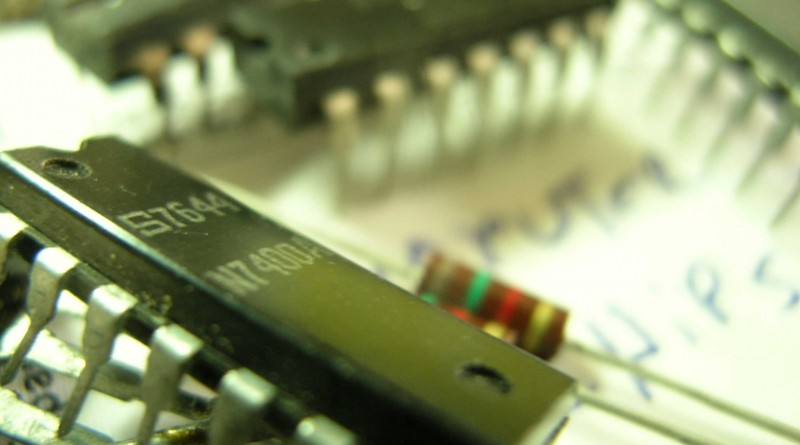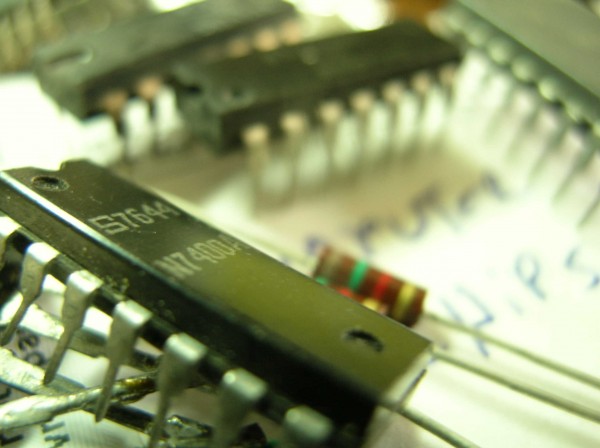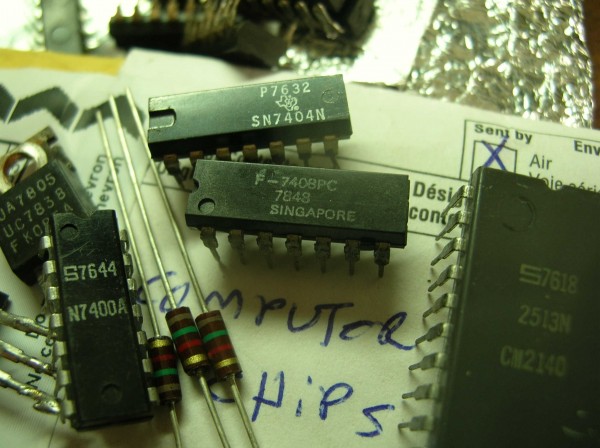
Apple 1
– It will be fantastic to have an Apple 1 at our Museum…
– …yep!
– But it cost way too much.
– Well… we can… rebuild it…
– What? Rebuild it?s
– …I know a guy in the States that made a copy of the motherboard; a perfect copy. We only need the chips…
– Hey, this is a FANTASTIC IDEA!
– …maybe searching vintage chips… here in our shelves we have a lot of them…. looking online auctions… doing some search…
– Fantastic!
– …check datacodes, analyzing original board pictures to check what kind of components are used… a crazy work, crazy like hell!
– Let’s do it! Let’s do it NOW!
– asbesto & ram, Luglio 2011
Why rebuild an APPLE 1?
The Apple Computer 1, designed and built by Steve Wozniak in 1975/76 during his spare time in his cubicle at Hewlett-Packard where he worked, was the computer that has allowed Apple to become what it is today. A few hundred pieces, produced and sold in record time, only one board and nothing else – the buyer had to create by itself a container, a keyboard, even the power supplies. Interface for tape recorder, connection to a B/W monitor. Today it is sold at auctions, according to his working characteristics, , at prices ranging between $ 20,000 (online auction) and $ 250,000 (one of the recent auction of Christie’s). Obviously we can’t afford a purchase like this at the moment!
But its implementation, starting from scratch, becomes primarily a creative performance. There will be several experts involved in the search for suitable components to make a working copy with the right features to be a museum reproduction: we want to use components of the same age and form, with properties equal or almost similar to the standards of that time.

Signetics TTL chip 7400. Datecode is “7644”, it means it was produced during the 44th week of 1976.
We have seen other clones around, but often these are manufactured with new high quality components. This does not reflect the original idea of Woz: to create a computer using only the cheapest and easy to find parts available. So we are looking for the original components of the ’70s, new or used parts, maybe recycled from other boards; they must be in good shape and working condition, and as much as possible similar, if not identical, to the originals mounted on the Apple 1 motherboard in 1976.
A forgery?
So what distinguishes an original copy from our copy? Well, first of all the fact that we declare this. Cheating, would be possible to create a perfect clone, indistinguishable from the real Apple 1, recovering the same components, with the same datecode, producing from scratch a motherboard identical to the original, aging it, using vintage instruments and creating a story that supports its existence (or its false discovery). This, in our view would be perfectly feasible: a piece of technology like this would be more ‘easily reproducible than a painting by Caravaggio. But, as well as a scam, that would be an art forgery.
A copy for a Museum (there are dozens of copies in Museums around the world) should be made according to strict scientific criteria, and its purpose is to allow visitors however, in the absence of the original, to observe and appreciate a piece of our history. This is our goal, and we are proud to produce a result virtually indistinguishable from the original, a big challenge for the more experienced visitors…
Education and entertainment
Phases of the development, which began months ago with the search of the first components, are documented in every detail, so will be documented all the phases of construction, testing and commissioning. Every single choice is weighted and calculated on the basis of precise working methods that favor as much as possible a faithful reconstruction that reflects the original sense of the original piece and that communicates the same feelings.
The goals are multiple: to have fun, to create a very interesting piece for an exhibithion, to learn new things and possibly to involve other fans to play and share with us this educational journey, that will lead us to fully understand how a computer works in 1976, studied in detail and then rebuilt with parts of the period.
Support this project
To achieve this latest project we are working hard, using economic and personal resources; some components have become very rare and can not be replaced with new components without affecting the final result of the reconstruction. But we are close to success, we know we can do it! For this reason we ask for your help: become a supporter of the Museo dell’Informatica Funzionante and help us to realize a part of the Apple 1, which will be exhibited there!
You can help making a donation, or finding some components that we’re looking for:
WARNING: EVERY PART LISTED HERE MUST HAVE A DATECODE OF 1976, R BEFORE, OR NEAR (1977, 1978, 1979). Quantities are not specified, the more we collect, the better!
- LM320MP-5 Negative voltage regulator, -5V, case TO202
- LM320MP-12 Negative voltage regulator -12V, case TO202
- LM340MP-12 +12V Voltage Regulator, case TO-220
- NE555 by SIGNETICS
- LM323K Voltage Regulator, +5V made by NATIONAL, GOLD VERSION
- TTL chips: 7400, 7402, 7404, 7408, 7410, 7427, 7432, 7450, 74123, 74154, 74157, 74160, 74161, 74166, 74175, made by SIGNETICS or FAIRCHILD
- TTL chips 74S257 made by FAIRCHILD, in CERAMIC CASE
- MOTOROLA 6820 or SIGNETICS SY6820/6520
- CPU 6502 by SIGNETICS in white ceramic case
- CPU 6502 by SIGNETICS in plastic case
- DRAM 4Kx1 4096-11 by MOSTEK, plastic case
- DRAM 4Kx1 4027 300nS by MOSTEK, plastic case
- DRAM 4Kx1 4096-11 by MOSTEK, purple ceramic + gold case
Come build with us!
Every Wednesday afternoon, from 15 to 19, you will find us, as always, in our Museum, in Via Carnevale 17 in Palazzolo Acreide, near Siracusa, ITALY
.

